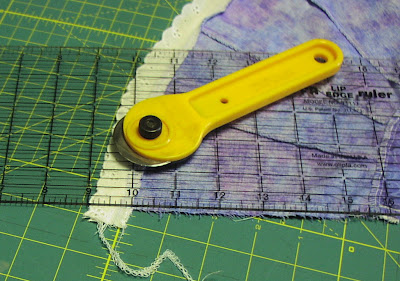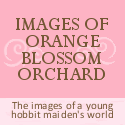Oh yes, that brings me back to the day I first found it. It was not the only one I discovered in that chest; actually there were three more. But as I looked at them, it was the one particular sewing pattern that grabbed my eye and took my fancy. I'm not sure why I liked it. I mean it really wasn't the frilly kind of dress a little girl would like. In fact it was rather plain, but the way bodice seemed to drape around the shoulders until it reached the waist somehow fascinated me. OR maybe it was because I realized that it was OLD, and I have always had a tender-spot for old things (even as a child).

I hurriedly put everything back into the trunk, gathered up the four old tattered treasures into my arms and rushed back down the stairs as quickly as my fear of those steep old stairs would allow me to go. You see, I had been learning to sew for a while now, and surely my mother would allow me to make THIS dress. She just had to!!! “Mommy, Mommy,” I called as I raced around the house in search of her. “Look what I just found. Isn’t it beautiful? Can I make it? Pleeeeeeease!”, the words and exuberance tumbled from my lips.
But my mother got that tired look on her face that her overly active, imaginative, and curious little girl sometimes put there. “Oh, Nanci, you’ve been rootin’ in the attic again. Haven’t you? You didn’t make a mess up there, did you?” Her thoughts seemed to drift away.
The mother in me now realizes that she was probably anticipating the mess that would greet her at spring cleaning time. Each spring she would trudge up two flights of stairs with a bucket of bleach water, scrub brush, and cloths to scrub the floor and wipe down the dingy walls of a part of the house that no one other than our family ever saw. In retrospect, I believe each year she would have to rearrange the boxes into which I had delved, the very same boxes that she had neatly packed and stacked the year before. She would have to tidy up the attic before she could even begin to scrub. At the time, I really didn’t think that I had made a mess at all. Even if I had, I wondered why mom even cared about it. Why clean what no one ever saw?
Mommy shook herself from her musings, held out her hand, and sighed, “Here, let me see what you have there. Oh, Honey! These patterns would be much too difficult for you to sew. You’re not ready to sew something this complicated yet.”
“You could make it for me!” I reasoned. However, I knew even before the words were out of my mouth that my argument was futile. Unlike my seamstress grandmother, who had died long before my mother married my daddy, my mother really didn’t like to sew. Daddy said that it made her nervous and agitated.
“Nanci, the style is too old for you. This pattern was used to make a dress for me many years ago. Maybe when you’re older, you can make it.” And that was the end of that. :( By the time I had enough sewing experience to make the dress for myself, the pattern was much too small for me. My mother had been a slender woman; I was a little more substantial -- like my father. But I never could bring myself to get rid of that pattern or even the other three, for that matter. They moved with me to my first home when I married my husband, and again followed me to this house fourteen years later and took up residence in my bedroom for the last six years. That is until several weeks ago. . .





























































